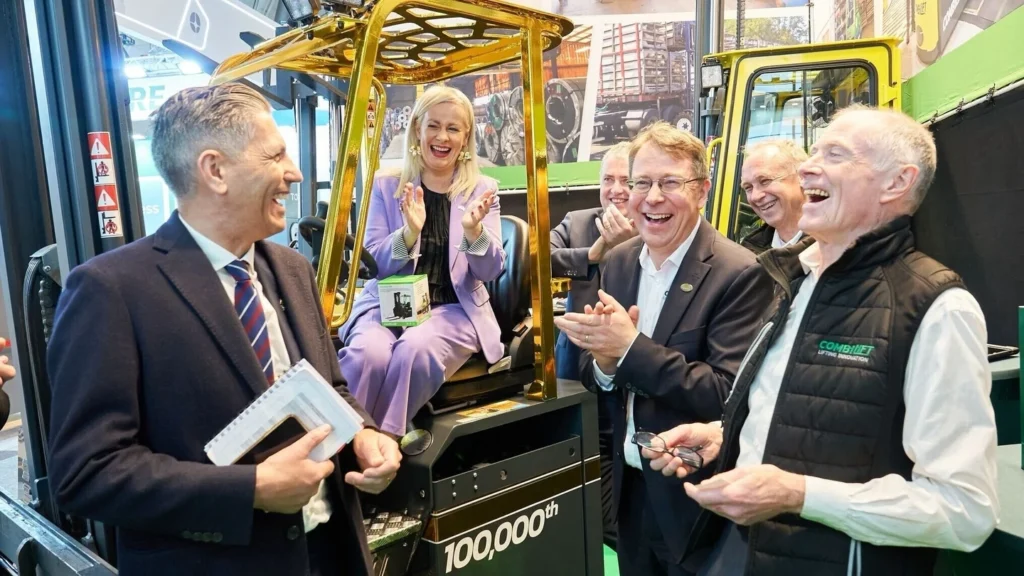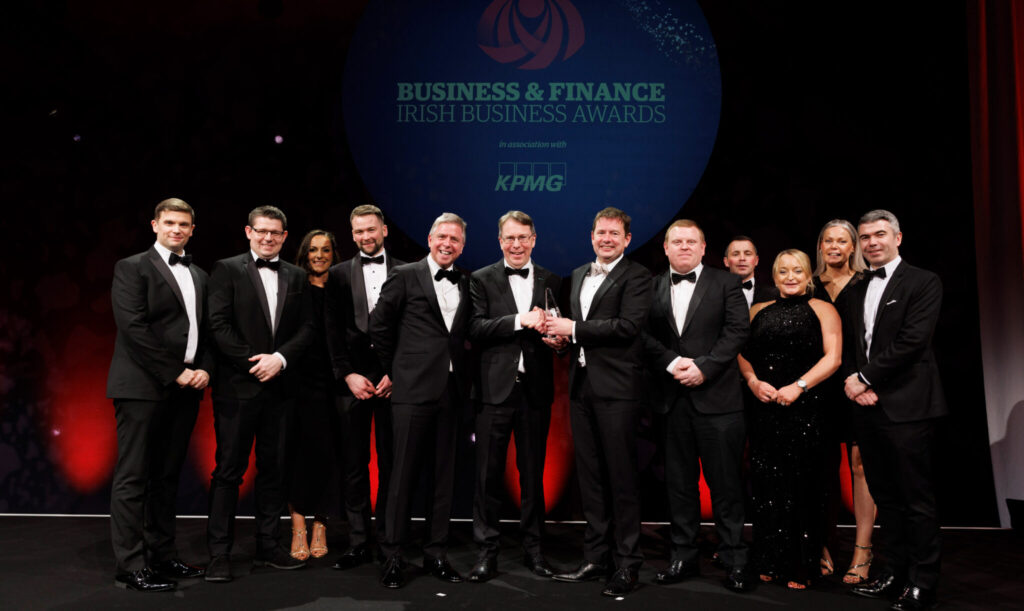Combilift’s first multi-directional forklift is just one of dozens of patented designs where company stalwart, Mark Whyte, was instrumental in its design and development. After 26 years of service, Whyte has certainly made his Mark on materials handling worldwide.
From the Combilift multi-directional C4000 in 1998, to the Pedestrian range’s tiller arm in 2012, Whyte has helped Combilift reinvent forklifts so that they improve safety, maximise storage, and increase efficiency for customers. Now working as research and development manager, Whyte remains loyal to the company ethos of continuous development. He attributes this to a mindset that is instilled into each of his colleagues. “The company has a very good can-do attitude, from higher management right through the entire workforce,” he says.
The first C4000 was based on Moffett’s three-wheeled system which set itself apart by removing the need for a suspension system. The multidirectional functionality changed the forklift industry by recognising the market’s need to optimise yard and warehouse space. “No matter what industry it is – steel, timber, manufacturing – everybody wants to save space in their yard and warehouse.
Mark Whyte
This has led Combilift to register roughly 140 patents worldwide. The Pedestrian tiller arm has been one of Combilift’s most popular patents. This innovation has allowed warehouses worldwide to narrow their aisles by repositioning the operator to side of the truck while increasing visibility. Whyte describes the moment he and Combilift’s co-founders – Robert Moffett and Martin McVicar – dreamt up the solution. “The invention on the pedestrian model’s tiller arm was like a light bulb moment around my desk one day with Robert and Martin,” he says. “We said, ‘imagine if you could just stand to the side of the forklift.’ And that became the focus of the product.” He first met McVicar and Moffett in 1993, when he started as a mechanical design engineer for Moffett Engineering. Then, in 1998, Combilift was founded, and Whyte was pivotal in the design of the C4000 – the manufacturer’s first engine-powered multidirectional forklift.
“We didn’t have all the luxuries of 3D modelling and I did some of the work at my home. “Its design and development was the work of about 10 people – now, Combilift has about 800 staff worldwide.” The first C4000 was based on Moffett’s three-wheeled system which set itself apart by removing the need for a suspension system. The multidirectional functionality changed the forklift industry by recognising the market’s need to optimise yard and warehouse space. “No matter what industry it is – steel, timber, manufacturing – everybody wants to save space in their yard and warehouse,” Whyte says. “Obviously, new yardage and storage costs money to expand so the space saving is of great value to our customers.”
Evidently, this truth was as accurate in 1998 as it is in 2024 – Combilift’s attention to customer needs has been the cornerstone of its growth as a multinational manufacturer. Even whilst the rest of the world was brought to a halt by the pandemic, Combilift’s engineering team focused its attention on aiding the fight against COVID-19. As a shortage of ventilators loomed over Combilift’s home in Ireland, the team devised a “splitter” which would allow one ventilator to support multiple patients. This design was given to local hospitals and the patent was even shared in Brazil. This only served to highlight Combilift’s commitment to health and safety. Returning to a forklift context, Whyte explains how the C4000 was also revolutionary from a safety perspective. “Safety is also of value to the customer because even with multi-directional trucks you can travel with long-loads low down,” he says. “When carrying long loads with counter-balanced trucks, you have to raise the load which can impact safety.”
Doubtless, this game-changing design was influenced by market demands, as much as all other Combilift designs. Of course, those market demands can ask a lot of an engineer, and not all problems can be solved with sheer brain power alone. In his 26 years at Combilift, Whyte has witnessed an incredible amount of technological development. This has enabled him and the team to engineer increasingly safe, stable, intuitive, and ingenious designs. In 1998, the C4000 and other early models were designed using AutoCAD – a software application for computer-aided design (CAD) and drafting. While the program has been updated regularly and is still used by engineers and designers today, earlier versions were no match for the processing power of today’s computers.
Combilift has since used other programs such as Mechanical Desktop, and Autodesk Inventor, before arriving at their current program, SolidWorks. “We can also do Finite Element Analysis (FEA) to take a closer look at individual components,” Whyte explains. “If you want to find any weak points in a design, you can load it into SolidWorks’ FEA. This will identify stress concentrations so that we can mitigate them to avoid unwanted problems.” Additionally, the rise of 3D printing has greatly improved Combilift’s ability to prototype and test their newest models. Despite newer models’ benefit of modern technology, Whyte still struggles to choose a favourite, each one holding a special place in his 26 years at Combilift. “I don’t think I could choose one over another. I’ve worked on most of the forklift models here and they’re all unique – that’s the beauty of Combilift,” he says. “I usually take them right from concept to prototype before handing over to another engineer who will set up BOMs, spares and operators manuals, and get it streamlined for production.”
Whyte is content in his role as R&D manager as he is continuously motivated by the company’s ongoing innovations. “Combilift is a very exciting company to work for. And the fact that we’re always developing makes it even more exciting,” he says.

















